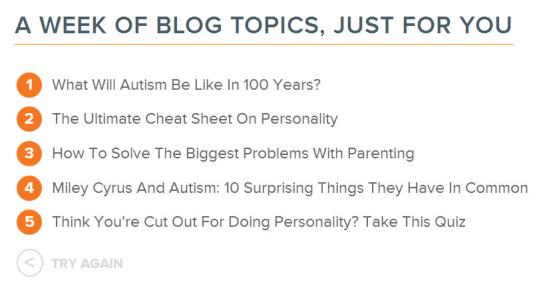 I don’t care how perfect you are as a parent, there are going to be some occasions when your children squabble. This is why Erma Bombeck’s timeless wisdom resonates: “Never have more children than you have car windows.” But as this warning also suggests, with a little mindful planning, parents can influence—to a great degree—how well children get along.
I don’t care how perfect you are as a parent, there are going to be some occasions when your children squabble. This is why Erma Bombeck’s timeless wisdom resonates: “Never have more children than you have car windows.” But as this warning also suggests, with a little mindful planning, parents can influence—to a great degree—how well children get along.
Most parents do try to encourage good relationships among their children, but even so, some siblings seem incapable of spending even a civil second in one another’s company, and there may not be clear reasons for this at first. If this describes your family, it’s worth considering that some of the following unconscious habits might be undermining your efforts.
When parents are surveyed on the subject of favoritism, nearly all respondents say that despite their best efforts to the contrary, they have favored one child over another at least occasionally. They also typically admit that they know favoritism is hurtful to children and that they try to avoid it as much as possible—and there’s good reason to do so. Unfavored children are vulnerable to depression and aggressive behaviors, and a reduced sense of self-worth and social responsibility. But favored children also suffer from harmful effects. They may feel empathy, or even guilt, for the “underprivileged” sibling’s experiences; or feel the loss of what might otherwise have been a close sibling relationship. Of course, just because parents may treat children differently does not mean their actions are necessarily “preferential.” But when differential treatment is necessary, it helps for parents to explain why it’s necessary.
2. Viewing sibling conflict as “normal” preparation for “real life.”
Many harmful stereotypes could cloud parents’ understanding of the boundary between healthy and unhealthy sibling relationships, but this may be the worst offender. It’s true that children can learn a great deal about how to resolve conflict as they interact with their brothers and sisters, but the necessary skills are not automatically absorbed. Without clear boundaries and parental intervention, “ordinary” conflict can develop into chronic aggression, which in turn can escalate into violence. It may not always be easy for parents to recognize the line between normal developmental conflict and abuse, but researcher and psychologist John Caffaro offers a helpful guideline: “Violent sibling conflict is a repeated pattern of physical or psychological aggression with the intent to inflict harm and motivated by the need for power and control,” he says, noting that psychological attacks are frequently at the core. “‘Teasing’ often precedes physical violence and may include ridiculing, insulting, threatening, and terrorizing as well as destroying a sibling’s personal property.” Often one sibling (not always the oldest or biggest) consistently dominates in these conflicts, and the weaker or more passive child, having failed at all attempts to stand up to the aggression, will cease to resist in what researchers call “learned helplessness.” A common manipulative tactic among children is to say, “I won’t play with you if you don’t . . . [fill-in-the-blank].” This is not harmless teasing, says researcher Laurie Kramer. Rather, it’s full-fledged bullying.
Bullying perpetrated by brothers or sisters can be considerably more traumatic to children than peer bullying, because it occurs within the home on an ongoing basis and there is often no way of escape—and very little respite—for the sibling on the receiving end.
3. Tolerating conflict as a normal part of the general family atmosphere.
A retired professor of social sciences at Swansea University in Wales, Robert Sanders has extensive experience in working with children and families. In his 2004 book on the subject of sibling relationships, he summarizes that“factors such as the child’s temperament, the level of positivity in the relationship between the parent and children, differential negativity in the relationship that the parent(s) has with the children, and the level of conflict between the parents, all combine to influence the quality of the relationship between siblings, which may prove quite consistent over time between middle childhood and early adolescence.” While all these factors could, in theory, be modified, often they are not: patterns of behavior in dysfunctional families tend to persist unless someone or something becomes a catalyst for change.
4. Believing that it’s enough to discourage negative interactions between siblings.
Just because children don’t lash out at one another doesn’t mean they feel warmth in their relationship—and it’s the degree of warm feelings rather than the absence of negative ones that predicts children’s well being. This isn’t to say that children who feel warmth toward one another will never experience conflict, of course; but the goal for parents is to help children increase their ability to resolve conflict reasonably quickly and restore an atmosphere of active support. This may require parents to change their expectations: instead of brushing off hitting, name-calling and shunning as harmless behaviors, parents ideally would make it clear that they expect their children to treat each other with warmth and affection, and would reward such behavior when it occurs spontaneously. Positive reinforcement works wonders.
5. Neglecting to talk to kids about the “bonus benefits” offered by good sibling relationships.
Sibling relationships are likely to be the most enduring they will have in their lifetime. Like our parents, siblings are party to our early experiences, but barring unnatural death, they are likely to remain part of our lives much longer, outliving parents by 20 years or more. In addition, if siblings share both parents with us, we will typically have about 50 percent of our DNA in common. That means they are genetically more like us than anyone else on earth other than our parents. Considering that these relationships can contribute tremendously to the stores of resilience that will help carry us through the adverse events that are an inevitable part of life, it makes sense to ensure that they are as supportive and nurturing as possible.
With these 5 considerations in mind, what do you think the chances are that the siblings in this video will grow up to have close, supportive relationships in adulthood?










